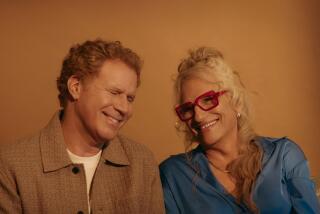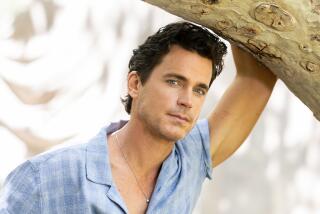Solid Crossover Appeal Bolsters ‘Queer as Folk’
As might have been expected, “Queer as Folk” got mail, and lots of it, in a first season that included sex between young gay men, and lots of it.
Unexpectedly, perhaps, it was mostly fan mail--about 100,000 messages from supporters versus a scant 100 from detractors, according to Showtime’s count. That was a pleasant surprise for series creators Ron Cowen and Daniel Lipman.
“We thought, ‘Oh, my God, they’re gonna come after us, there’s gonna be real nuts out there coming after us,’” Cowen said. “It didn’t happen.”
The Showtime series about a circle of friends tracked their freewheeling night life and emotional ups and downs. AIDS, drug abuse and harrowing gay-bashing also figured in the plot.
The fleeting kisses and coy farce of quasi-gay shows like “Will & Grace,” sanitized for broadcast TV and our protection, bear no relation to the bold style of “Queer as Folk.”
The series became Showtime’s highest-rated, doubling the cable channel’s prime-time average audience. It was renewed for a second season, which begins Sunday.
The show, based on a hit British TV series of the same name--the U.S. version is set in Pittsburgh but filmed in Toronto--turned out to have crossover appeal.
“We knew there would be an audience among gay men for the show,” said Jerry Offsay, Showtime’s president of programming. “What we didn’t realize is that it would have as strong a following among women as it did.”
The audience was fairly evenly split between gay men and heterosexual women; Offsay and others at Showtime have kicked around theories why. (Straight men tended to take a pass on “Queer as Folk.”)
“The guys are really good-looking. It’s a soap, and women like soaps. It’s a story about friends, and that’s something that plays well with women,” Offsay said. “They came, they watched, they liked it.”
Cowen and Lipman, writing partners for 25 years and a couple for even longer, welcomed the expanded audience. But they didn’t create or shape the series to accommodate heterosexual viewers.
Lipman recalled one magazine review that questioned the lack of a “straight guide” to the series, and the response a reader sent in: “I don’t see a gay guide to ‘Once and Again.’”
“We’ve never written the show to try to guide people into this world,” Lipman said. “We’ve written it very specifically, and if people get things, they get it; and if they don’t, they don’t.”
What he hopes they get is how much in human experience is universal, whatever one’s sexual orientation.
“What the show is really about is boys becoming men,” Lipman said. “Some characters will succeed at that, and some won’t. The show is about maturing.”
The characters populating “Queer as Folk” are mostly young men, attractive and single, whose adventures we follow at work, at home and in bed.
Brian (Gale Harold) is a handsome heel, successful and self-absorbed. Michael (Hal Sparks) is his good-hearted childhood friend who carries a torch for him. Teenage Justin (Randy Harrison) is coming to grips with his sexuality.
Also featured is a lesbian couple (Michelle Clunie and Thea Gill) whose lives intertwine with the men.
It was Justin who was brutally attacked by a homophobic classmate at the end of last season.
His recovery, and the assault’s psychological effect on him and others, will be explored in the second season.
The series really hit its peak in the finale, Offsay said. It emphasized the men’s camaraderie and “hit the nail on the head of how dangerous it can be sometimes being gay in America.”
The women will get more attention this time around; Showtime thought they were underused last season. The rest of the ensemble cast, including Sharon Gless as Michael’s kooky but supportive mother, also will be seen more.
The show’s first season had 22 episodes, which are out this month on DVD and videocassette. The second consists of 20 episodes.
Although the bedroom scenes are steamy, Offsay said they are no more graphic than other Showtime fare about heterosexuals. “We don’t want to push it beyond that just for the sake of pushing,” he said.
“Queer as Folk” has not escaped criticism altogether. Some of the loudest denunciations came from members of the homosexual community who resented the show’s depiction of gay promiscuity.
The series’ creators respond that they are not trying to represent all of gay life, but a slice of it as lived by young singles.
“I think there are a lot of people who think if you’re going to do a show about gay characters, it should be politically correct. Our show is not politically correct,” Lipman said. “It’s not about a doctor and lawyer who live in the suburbs and walk their poodle.”
The focus is specific but honest, Cowen said.
“There is nothing we’re showing that doesn’t exist in West Hollywood, Chelsea, the Castro,” he said. “In fact, the version we’re showing is a gentle version. What goes on in the world is even more harsh and disturbing than what we’re portraying.”
More to Read
The complete guide to home viewing
Get Screen Gab for everything about the TV shows and streaming movies everyone’s talking about.
You may occasionally receive promotional content from the Los Angeles Times.






